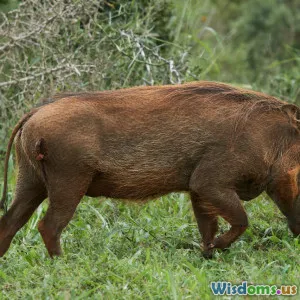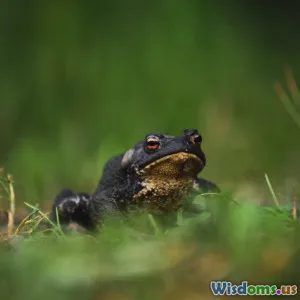
Conservation Strategies for Endangered Species
6 min read Explore effective conservation strategies to protect endangered species and ensure the survival of biodiversity. (0 Reviews)
Conservation Strategies for Endangered Species
The world is home to millions of species, each playing a crucial role in maintaining the ecological balance. However, many of these species are endangered, facing threats from habitat loss, poaching, climate change, and more. Conservation strategies are essential to safeguard these species and preserve biodiversity. This article explores various methods employed globally to protect endangered species and their habitats.
Understanding Endangered Species
An endangered species is one that is at risk of extinction due to various factors, including environmental changes, human activities, and loss of habitat. The International Union for Conservation of Nature (IUCN) provides a Red List that categorizes species based on their extinction risk. As of now, over 28,000 species are listed as threatened.
Key Conservation Strategies
1. Habitat Restoration
Habitat restoration is one of the most effective strategies for conserving endangered species. This process involves rehabilitating ecosystems that have been degraded or destroyed. For example, efforts to restore wetlands in the United States have helped revive populations of various bird species. Restoration can also involve reforestation, removal of invasive species, and reintroduction of native species.
2. Legal Protections
Implementing laws and regulations to protect endangered species is critical. The Endangered Species Act (ESA) in the United States, for example, provides a framework for the conservation of threatened and endangered plants and animals and their habitats. Legal protections can include the designation of critical habitats, restrictions on hunting, and penalties for poaching.
3. Community Involvement
Engaging local communities in conservation efforts is vital for the success of conservation strategies. When communities understand the value of preserving their local wildlife, they are more likely to participate in conservation initiatives. Programs that promote eco-tourism can provide economic incentives for communities to protect endangered species. For instance, the conservation of sea turtles in Costa Rica has led to increased eco-tourism, benefiting both the local economy and the turtles.
4. Education and Awareness
Raising awareness about endangered species and the importance of biodiversity is essential. Education programs in schools, communities, and through media can help inform the public about conservation issues. Initiatives like World Wildlife Day aim to educate the public and mobilize support for wildlife conservation.
5. International Cooperation
Endangered species often inhabit multiple countries, making international cooperation crucial. Treaties such as the Convention on International Trade in Endangered Species of Wild Fauna and Flora (CITES) regulate the international trade of endangered species and their products. Collaborative efforts between countries, NGOs, and conservation organizations can enhance the effectiveness of conservation strategies.
6. Scientific Research
Research plays a key role in understanding the needs of endangered species and developing effective conservation strategies. This includes studying their behavior, habitat requirements, and population dynamics. Advanced technologies, such as GPS tracking and genetic analysis, are increasingly used to gather data that can inform conservation efforts.
Case Studies
The American Bald Eagle
Once on the brink of extinction due to habitat destruction and pesticide use, the American Bald Eagle has made a remarkable recovery. Conservation strategies, including legal protections and habitat restoration, have led to the removal of the species from the endangered species list. This success story exemplifies the effectiveness of targeted conservation efforts.
The Sumatran Orangutan
The Sumatran orangutan is critically endangered, primarily due to deforestation and palm oil plantations. Conservation organizations are working to protect their habitat and promote sustainable palm oil production. Community-based conservation initiatives that provide alternative livelihoods are also helping to reduce the threat to these magnificent primates.
Conclusion
Conserving endangered species requires a multifaceted approach that combines habitat restoration, legal protections, community engagement, education, international cooperation, and scientific research. Protecting biodiversity is not just about saving individual species; it is about preserving the intricate web of life that sustains our planet. By implementing effective conservation strategies, we can ensure that future generations inherit a world rich in wildlife and natural beauty.
Together, through informed action and collaboration, we can make a difference in the fight against extinction and foster a harmonious relationship with the animal kingdom.
Rate the Post
User Reviews
Popular Posts


















